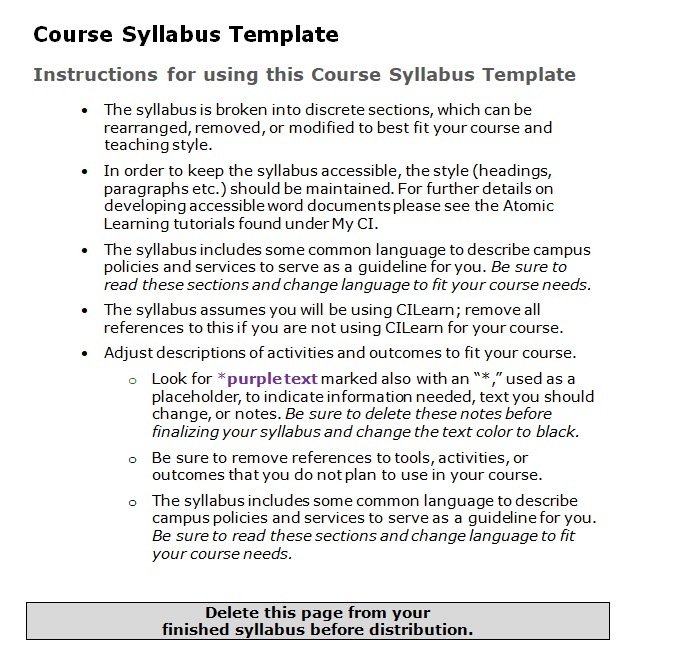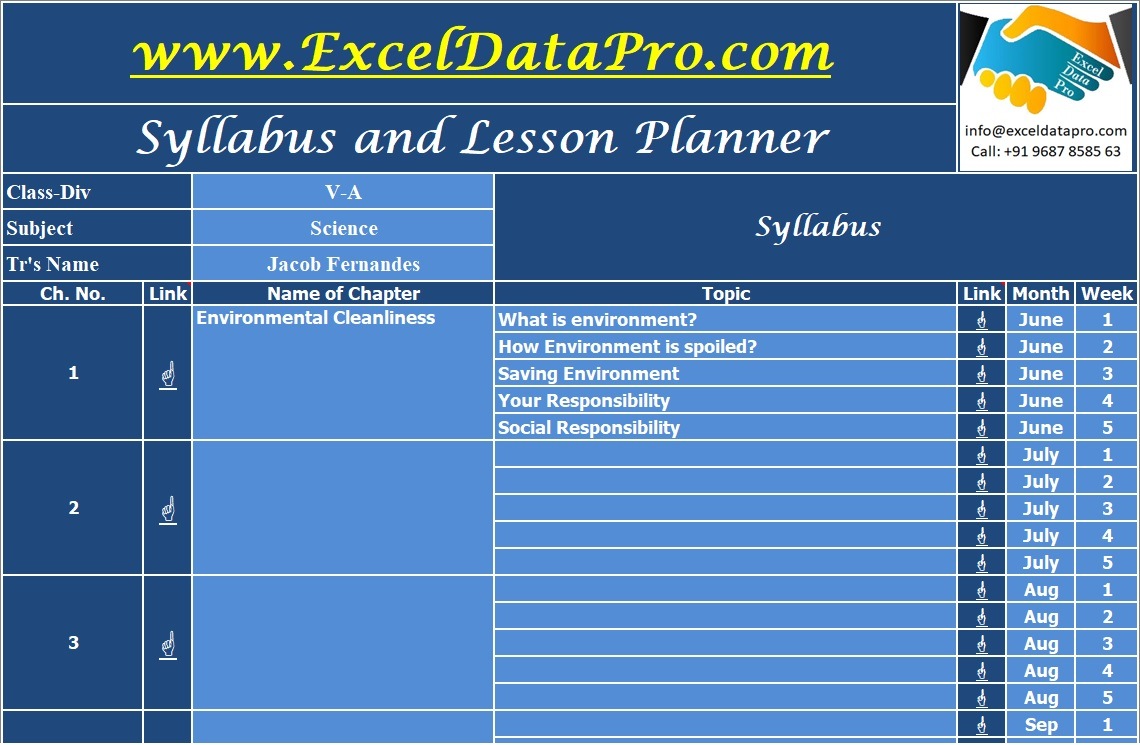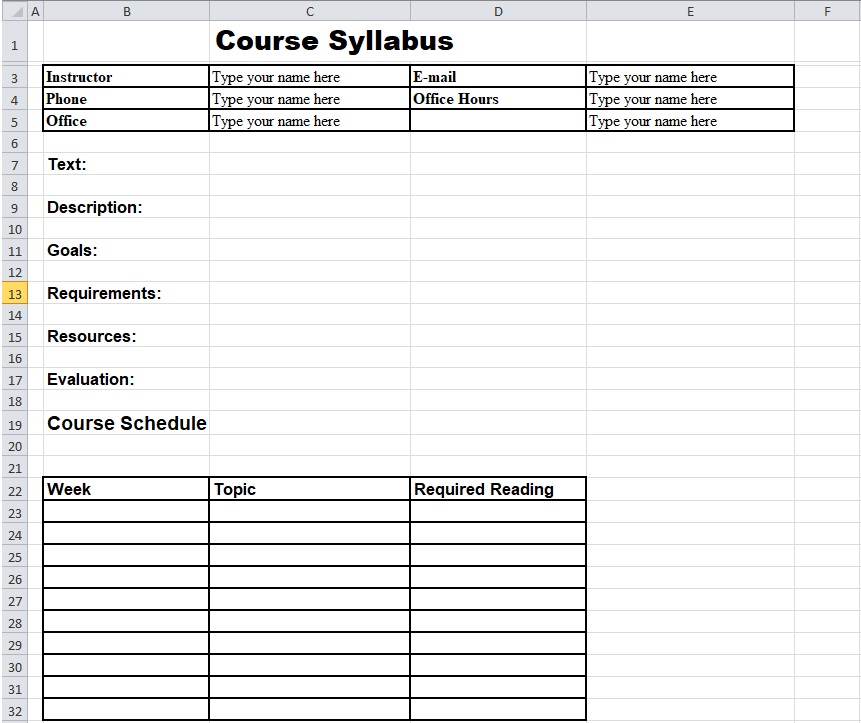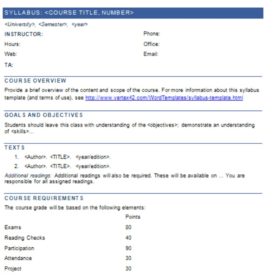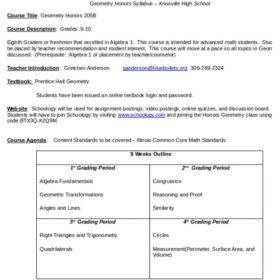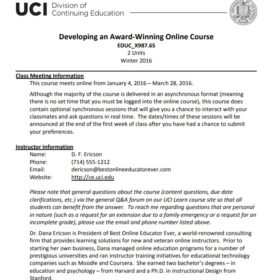A course syllabus template is a document which describes the key points of the content that is to be taught under a certain course for which the syllabus is made. It can be used both by the students and the teachers, making sure every student’s learning objectives are considered, mentioned and covered thoroughly. A course syllabus elucidates course outlines along with the responsibilities as well as expectations, connected with method of teaching. This can be prepared by the governing body of an institute or a panel of teachers or any professional, whom the organization or institute not only feels trustworthy but can also monitor progress. Students can also take part in the syllabus preparation process, where they can add or remove chapters or scope areas with the consent of the governing body.
Why is a class schedule necessary?
The role of a course syllabus is to provide understandable instructions concerning the subject and scope of the course, along with principles and methods of instruction. Apart from the teacher’s assistance, a course syllabus eliminates the ambiguities of students with respect to the course’s objectives, goals, duration as well as responsibilities. The vital goal of any syllabus is embedded with a clear understanding of the students and teachers. Not all educational institutions follow the same practices and principles while setting the overall content of the syllabus. Perhaps most institutions accept normal standards along with teacher’s discretion while finalizing syllabus content. While a syllabus comprehends policies and assignments which students need to follow during the course, it may depict a larger picture of the course’s relevant fields as well as industries.
Components of a course syllabus:
A common course syllabus includes the following components:
1. Name of the institute
The name of the institute is usually placed at the top of the course syllabus template in bold fonts so that no other institute can use their course for their course learning.
2. Name of the course or the subject
The name of the course is equally important to be mentioned at the top next to the name of the institute as it distinguishes different syllabi for different courses. Since most students take multiple courses at one given time, it is important to mention the name of the course for the differentiation.
3. Course code
A few institutions assign certain codes to certain courses to make it easier for them to be identified. There can be many courses on the same subject and different content with different codes being taught at one institute. Therefore, the code makes the course stand out, and it is convenient for the faculty to manage the administrative work related to the course. This can also facilitate management while making a gradebook of each student.
4. Teacher’s name
The name of the teacher teaching a certain course is also part of the course syllabus. Every teacher specializes in a specific subject, and they teach certain courses. Their name written on the course syllabus makes it easier for the students to communicate with the teacher.
5. Class schedule
The class schedule for every course is different as their credit hours differ from each other as well. To make sure two classes for a student do not coincide with each other, the class schedule is crucial and important to be mentioned on the course syllabus.
6. Course outline
The course outline briefly defines the keywords and the major topics that are part of the detailed content of the syllabus. This is like a checklist for whoever is using the course syllabus to ensure that all the topics mentioned in the course outline have been taught and discussed in the amount of detail mentioned in the course syllabus.
7. Credit hours
Credit hours are the number of hours for which a course is needed to be taught per week. Credit hours hold an important place in formulating the final score of a student.
8. Assignments, quizzes or other course requirements
Every course demands a certain number of assignments, projects and quizzes to be conducted by the teacher for the class. The score of these tasks is then added to the final score of each student. Every topic mentioned in the course syllabus has a potential task that can be assigned that will further help increase the understanding of the course.
9. Student learning objectives
Student learning objectives are usually given in the course syllabus by the teacher to make sure that he or she has taught in enough detail all the subjects which are demanded from a certain topic. Meeting the objectives of the topic is as important as teaching the course.
10. Calendar for the course
Every course is assigned a certain amount of time that is generally required for it to be taught. The calendar makes it easy for students to cover the syllabus in time before exams. Similarly, it helps the teacher cover the course on time with a surplus amount of time for tests, quizzes and assignments that are part of the course.
11. Books or other resources
Every topic has a book or a resource referred in front of it by the course compiler. It enables the students to read into the details of the course on their own. Even if the teacher misses out on a point, the student can read it from the reference material mentioned on the course syllabus.
